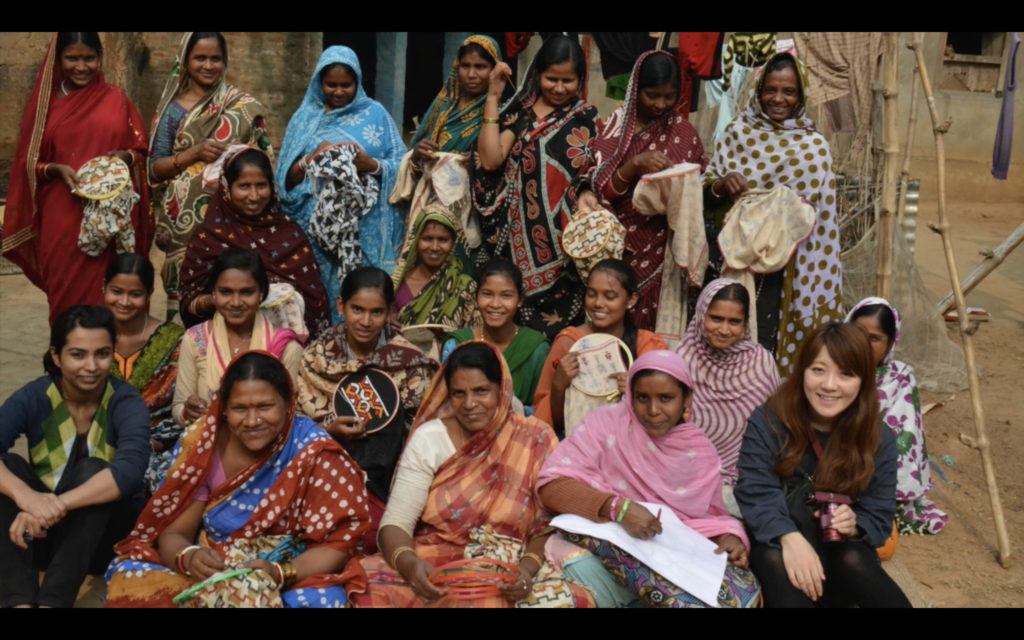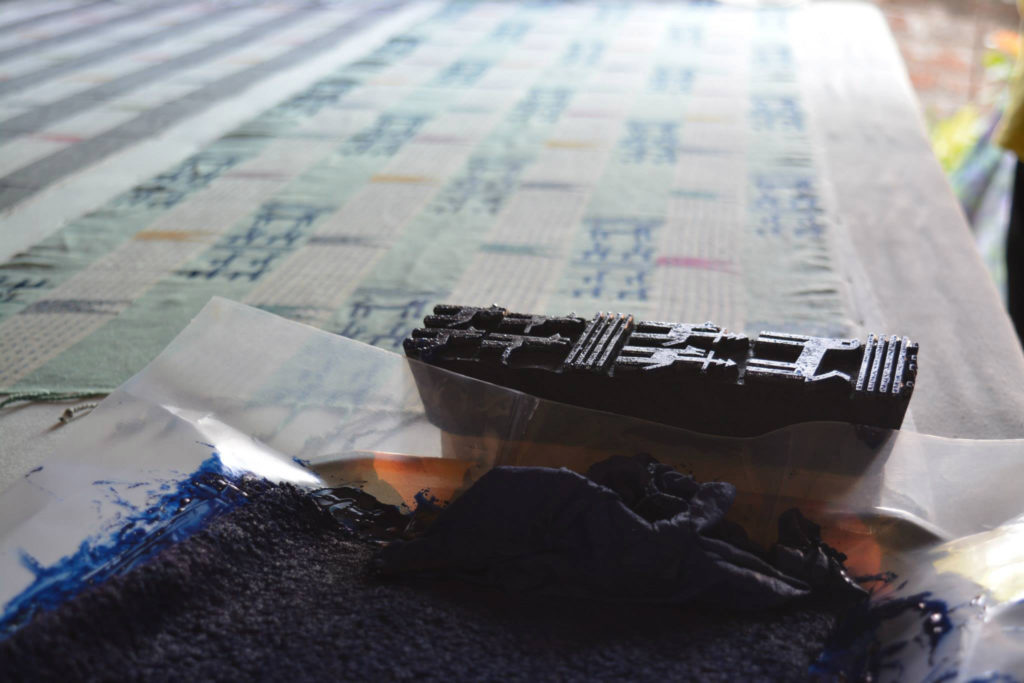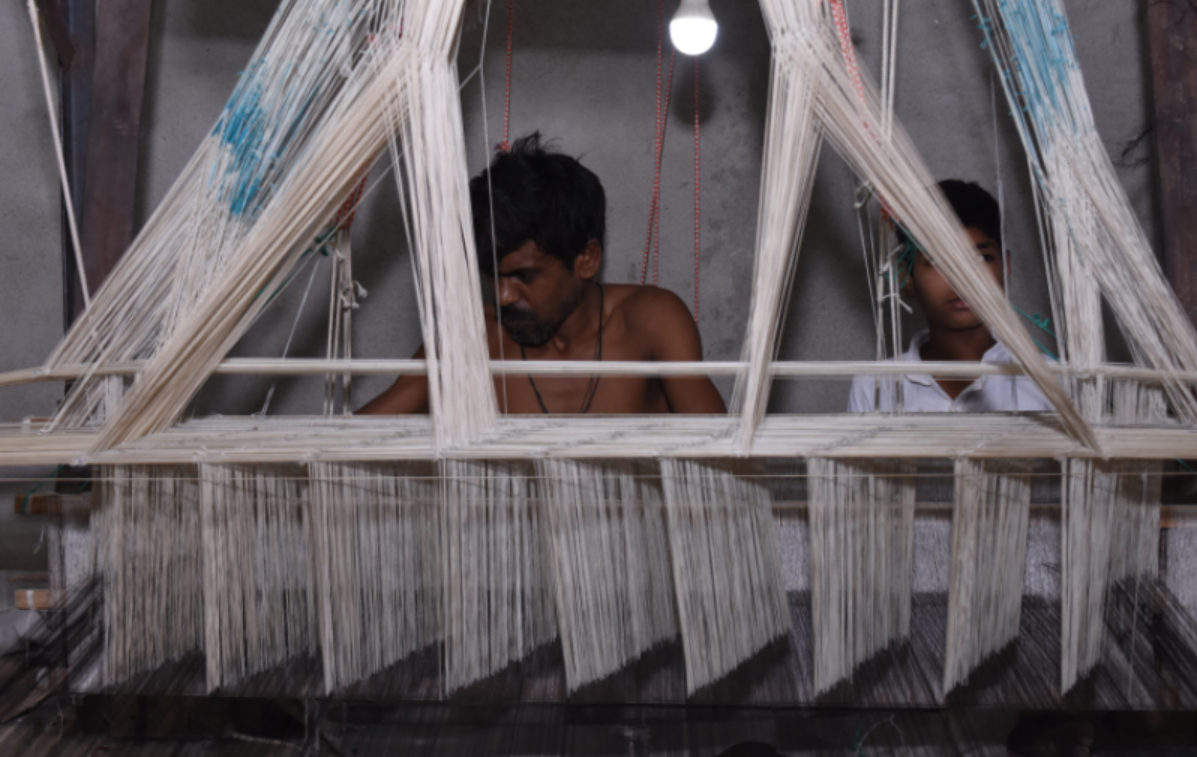India’s rich textile legacy is getting a much deserved facelift courtesy the efforts of some conscientious textile experts who are the flag bearers for this much needed cause.
The Kalkaleshwara temple in Gajendragarh in North Karnataka is interesting as it is not just a place of worship but a destination where local crafts once flourished. The vicinity of the temple has been hub of handloom manufacturers of the past and there is literature based evidence that says that weaving in Gajendragarh dated back to the 10th century. The evidence found also speaks of the Patteda Anchu sari being made at around the same period. And not just Patteda Anchu, but saris like Gomi Teni, Hubli sari and Lakundi sari have all been revived through extensive research and an ethnographic study across ten villages by textile expert and revivalist Dr. Hemalatha Jain through her venture Punarjeevana.

Revival Rhetoric
Textile revival certainly seems a key word that is driving designers, textile experts and apparel enthusiasts to make a difference. Designer Sailesh Singhania supports a family of 60 weavers who specialize in the Kadwa and Jamdani weaving technique with turning motifs which are unique to these weavers. “We have supplied these weavers with proper visibility conditions and have supported them right through warping, spinning, dyeing and getting the looms ready for jacard and jala. We have been providing these craftsmen with authentic and proper yarns and zaris and have helped them attain technical education and have provided 70 handlooms to these weavers in order for them to remain employed.” Vatsala Chopra, Founder, Veave’s Studio, Varanasi adds, “we are all about hand woven and hand embroidered textiles. We have always believed in our culture and the Indian art that we are very proud of. And it still exists, it is because of our artisans who have carried this gift for generations. We are trying our best to preserve the art and the beautiful weave that we have. We are a family of 40 weavers and we have about 30 handlooms.” Recently, Bengaluru saw the opening of a Museum of Living Textiles where the founder Pavithra Muddaya is working hard to ensure that weaves and patterns of the past are not lost by working with weavers to recreate them in saris and textiles.
Fabric Matters
The textiles that are being revived naturally holds a lot of value and emotions. The Patteda Anchu sari has for instance has a border inspired by jowar seeds, a crop of the region that also represents a symbol of prosperity. It was mainly gifted to pregnant women and also worn by married women during Shankarnti the harvest festival. “Since India is embedded with so many cultures and is rich in its tradition and heritage that we want people to feel the delicacy and intricacy of each thread that is woven into stoles and fabrics which is soft, comforting and promising,” avers Chopra. On a similar note, embroidery is one such textile craft that constitutes an important part of country’s rich cultural heritage. This ‘craft of the two hands’ is slowly losing its luster on the home ground and thus karigars in the bigger cities are scarce and not very adept. “The baton of patronage provided to hand embroidery by the nobles and aristocrats in the past, now needs to be handed over to the new-age designers and their clientele; as the magnificence of the art and intricacy employed in each warp and weft of the thread on the fabric is as riveting as the strokes of a brush on a canvas,” opines Samarjeet Kaur Gurm Founder, Plumtin.

Overcoming Obstacles
Revival of traditional and handloom textiles however is fraught with challenges. Since the weaving takes some time and is slow, the next generation is naturally looking at greener pastures and is unwilling to carry forward the art as the returns are very low. The advent of power looms has sounded the death knell for traditional handloom crafts as the product can be made faster and cheaper in the machines. “It is challenging when the focus of your revival project and brand is on quality craft that savors the succulent flavor of a two thousand year old civilization. We have taken up the challenge to bring the vanquishing craftsmanship back with the versatility and contemporariness. The revival project of Zardozi on Pashmina has proven to be an expensive venture. It is extremely challenging as it is done manually by skilled artisans as soft fiber often breaks during the process and cannot be fixed in any other way than by hand. As a skill that is learnt and passed on within families many people are switching on to the other jobs for better wages. Low wages are not the only threat – synthetic, machine made and low quality similar looking fabrics are also available in the market at a much lower price,” says Samarjeet. Textile revival is not easy but it can be made viable by ensuring that as buyers we make the right choice which is the best way to support the cause.
This story first appeared in The Tribune dated Nov 2, 2019 here:
